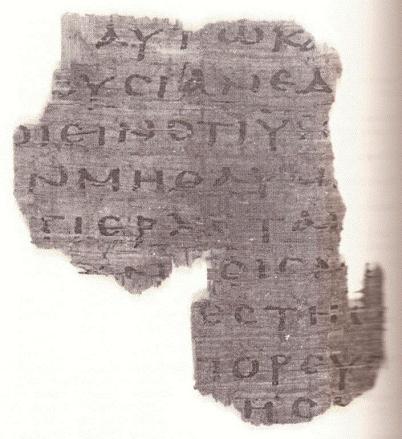| Change to Book/Chapter View |
|
|
|
Translation process is ongoing. For current status see details |
|
|

Papyrus 95 Discovered: Oxyrhynchus, Egypt Location: Florence, Italy: Biblioteca Medicea Laurenziana Contents: John 5:26-29, 36-38
John 5 26 For
as the Father has life in himself, even so he gave to the Son also to have life in himself. 27
He also gave [..] 36 But the testimony
which I have is greater than that of John, for the works which the Father gave
me to accomplish, the
very works that I do, testify
about me, that the
Father has sent me. 37
The Father |
How to read these pages: • The
translation to the left is based on the World English Bible. Words in regular
black font are words in the manuscript matching the Majority Text for that
passage. • Words
in italics cannot be seen in the manuscript, since the manuscript is
fragmentary. These words are supplied for readability by the World English
Bible translation. • Words
present in the manuscript but with some letters unreadable or missing are in blue
like this: blue. One Greek word often is
translated into multiple English words, and when this occurs, all the English
words are in blue. • Words
present in the manuscript but with spelling or trivial word order differences that do not affect the
meaning are in green like this: green. • If
the manuscript is different from the Majority Text, words in the Majority
Text that are missing from the text of the manuscript are marked through in red
like this: • If the manuscript is different from the Majority Text, words in the manuscript that are not in the Majority Text are underlined in red like this: new words.If the manuscript differs from the Majority Text yet matches another well-known text, this is noted in the footnotes.
|
